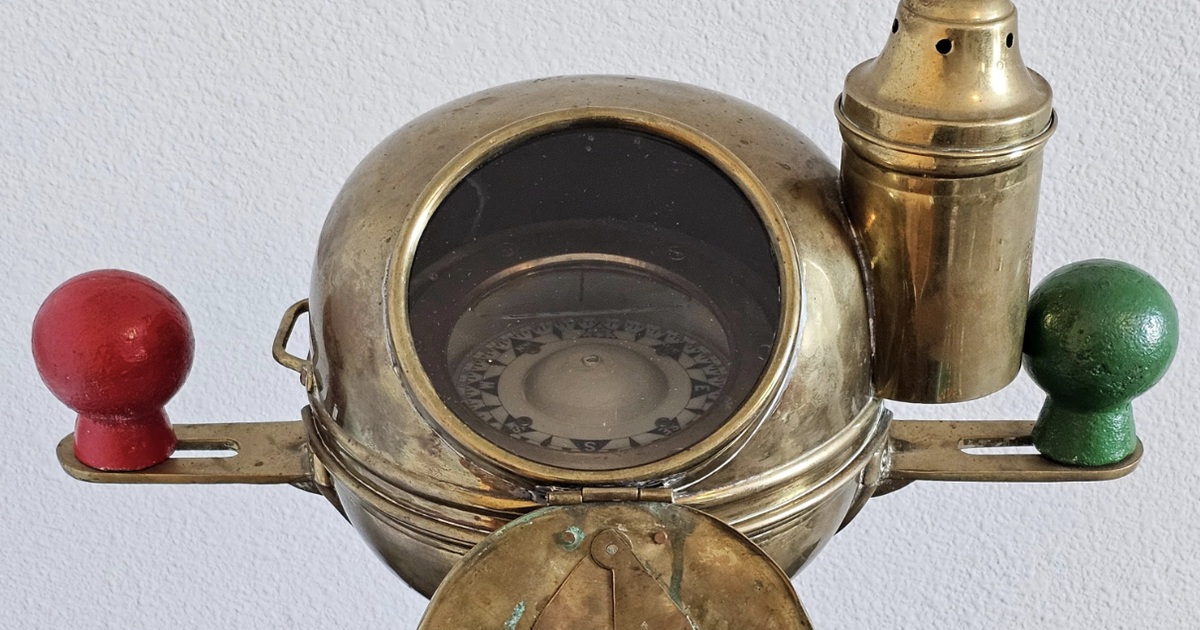Many of the most interesting finds aren’t in museums — they are stashed in old houses where we rarely get to see them, hidden in attics, basements, or behind layers of dust on a wall. That’s precisely what we have here; a spotlight-grabbing, globe-like object, standing atop a shining wooden plinth. But do not mistake it for a whimsical oddity. It’s a Sestrel binnacle compass dating to WW2, a vintage navigation instrument that once guided giant vessels through uncharted waters, long before the days of GPS and satellite navigation.
Before digital navigation, navigation on the seas was done with the help of magnetic compasses. But iron ships and volatile weather could disturb compass readings. So, it was the compass that sat inside a protective enclosure called a binnacle, located on deck near the ship’s wheel so the helmsman could easily read it. This design is similar to the binnacle used for the WW2-era Sestrel binnacle compass.
The binnacle was not only the home of the compass. It also had “corrector magnets” — those red and green knobs you see on the side. These magnets served to cancel out the effect of the ship’s metal hull, permitting more accurate navigation. These tools could be counted on even in the tumult of war to steer a sailor in the right direction.
The lettering on the brass plate — Sestrel — is the name of a well-regarded British nautical instrument maker, Henry Browne & Son Ltd. Founded during the 19th century, the firm became famous for precision compasses and sextants for boats under the Sestrel brand (from “sextant” and “Sestrel”). The WW2-era Sestrel binnacle compass was one of their most crucial creations.
